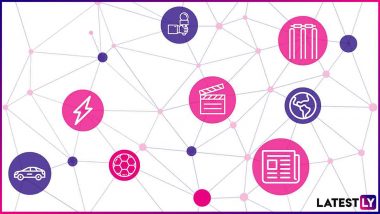New Delhi, Nov 27 (PTI) A total of 33 supercomputers with a combined compute capacity of 32 petaflops have been deployed in the country till November 21, 2024 under National Supercomputing Mission, Parliament was informed on Wednesday.
Petaflop is a unit of measuring the calculating speed of a computer.
Minister of State for Electronics and IT, Jitin Prasada in a written reply to Lok Sabha said India now has the capability of designing, developing and manufacturing supercomputing technologies indigenously, which will reduce dependency on imports of supercomputing technologies.
Prime Minister Narendra Modi had on September 26, 2024 dedicated three PARAM Rudra supercomputers to young researchers, scientists and engineers of the nation, facilitating advanced studies in physics, earth sciences, and cosmology.
Also Read | Karnataka Bank Recruitment 2024: Online Registration Begins, Check Eligibility, Fee, and Exam Pattern.
The three supercomputers were deployed in Pune, Delhi and Kolkata to facilitate pioneering scientific research, Prasada said.
"With the commissioning of three PARAM Rudra supercomputers, as of November 21, a total of 33 supercomputers with a combined compute capacity of 32 petaflops, have been deployed across various academic institutions, research organizations, and research and development labs, including prominent institutions like IISc, IITs, C-DAC, and other institutions from Tier-II and Tier III cities under NSM,” the minister said.
According to Top 500 Global Supercomputing List, US tops the chart in terms of supercomputers installed with an estimated total capacity of around 6,475 petaflops.
PARAM Rudra supercomputers deployed in Pune, Delhi and Kolkata have been designed, developed and manufactured entirely within the country.
The minister said that Giant Metre Radio Telescope (GMRT- 1Petaflop) deployed in Pune will leverage the supercomputer to explore astronomical phenomena, and Inter-University Accelerator Centre (IUAC- 3 Petaflops) in Delhi will enhance research in fields like material science and atomic physics.
"SN Bose Centre for Basic Sciences (SN Bose- 838 Teraflops) in Kolkata will drive advanced research in areas such as physics, cosmology, and earth sciences," Prasada said.
The supercomputers have been developed, deployed and manufactured under the National Supercomputing Mission (NSM) which started in April 2015 with a budget outlay of Rs 4,500 crore for seven years.
Prasada said that under NSM, an ecosystem has been established with the focused goal of achieving self-reliance in supercomputing, encompassing the design, development, and manufacturing of supercomputers, as well as the creation of a complete system software stack and associated applications.
"This approach is in line with Prime Minister's vision of...Atmanirbharta (self-reliance) through research, science for self-reliance," the minister said.
(This is an unedited and auto-generated story from Syndicated News feed, LatestLY Staff may not have modified or edited the content body)













 Quickly
Quickly

















